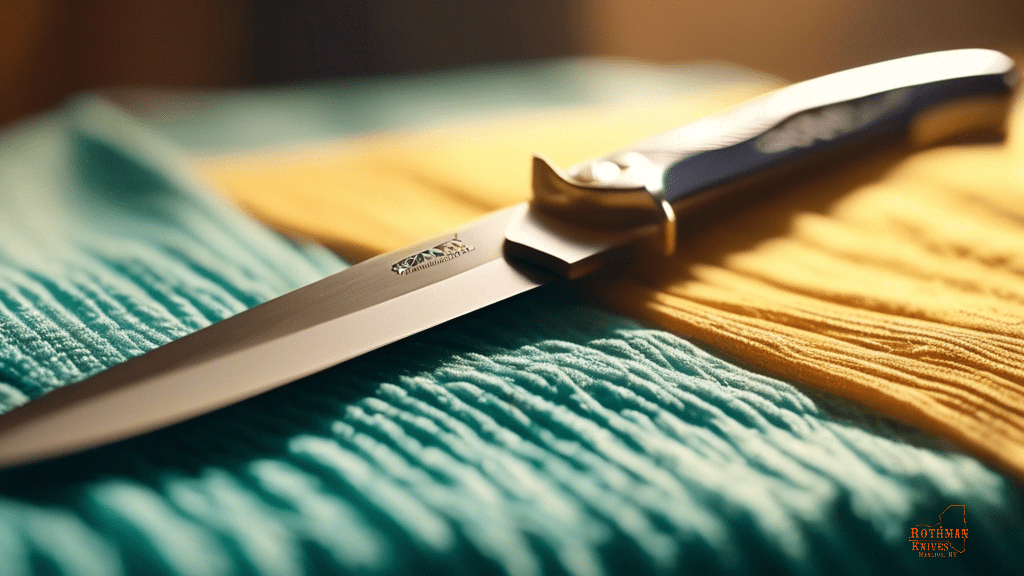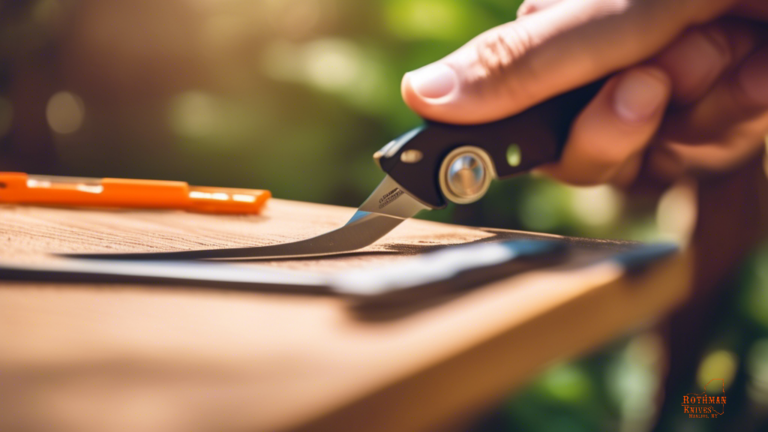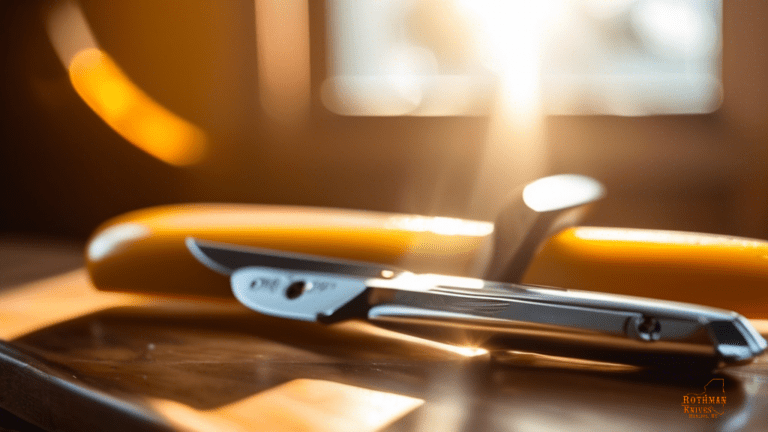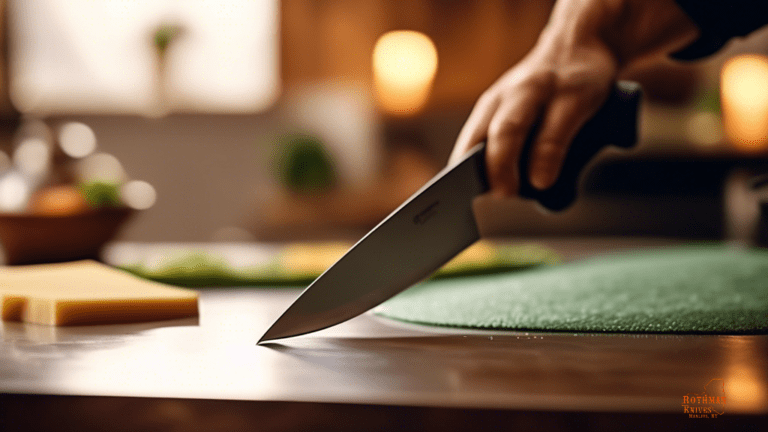Step-by-Step Guide: Cleaning Folding Knives
by Mike Rothman · September 16, 2024
Discover the ultimate guide on how to clean folding knives and keep them in top shape! Follow our step-by-step instructions for proper maintenance and ensure your tools are always sharp. Don’t miss out – click now to learn more!
Do you have a collection of folding knives that you cherish and want to keep in top condition? Cleaning your folding knives regularly is essential for maintaining their functionality and longevity.
In this step-by-step guide, you will learn how to properly clean and lubricate your folding knives, ensuring they remain in pristine condition for years to come.
Gathering the necessary supplies and following a systematic approach to disassembling, cleaning, lubricating, and reassembling your folding knives will not only keep them looking sharp but also ensure they perform at their best.
By taking the time to care for your knives in this way, you are not only preserving their value but also fostering a sense of connection and pride in your collection.
So, roll up your sleeves, gather your supplies, and let’s get started on cleaning your folding knives like a pro!
Key Takeaways
- Properly cleaning and maintaining folding knives is essential for functionality and longevity
- Gather necessary supplies before starting the cleaning process
- Disassemble the knife carefully to avoid damage
- Lubricate moving parts for smooth operation
Gather Necessary Supplies
Now that you know how to properly clean your folding knife, you’ll need to gather the necessary supplies before getting started.
First, make sure you have a gentle dish soap or knife cleaning solution. You don’t want anything too harsh that could damage the blade or handle.
Next, grab a soft cloth or sponge to use for cleaning. A toothbrush can also come in handy for getting into those hard-to-reach crevices.
Lastly, don’t forget to have some lubricant on hand to keep your knife functioning smoothly after cleaning.
Once you have all your supplies ready, you’ll feel a sense of preparedness and excitement to start cleaning your folding knife. It’s like getting all your tools together before embarking on a DIY project – you feel ready for anything.
So gather your supplies, take a deep breath, and get ready to give your folding knife the care it deserves. With the right tools at your disposal, you’ll be amazed at how easy and satisfying the cleaning process can be.
Disassemble the Knife
Before taking apart the knife, make sure to loosen the screws carefully to avoid any potential damage. You don’t want to strip the screws or cause any unnecessary wear and tear on your knife. Once the screws are loosened, gently separate the handle scales to reveal the inner components of the knife.
| Step | Instructions | Tips |
|---|---|---|
| 1 | Loosen the screws holding the knife together | Use the correct size screwdriver to prevent stripping |
| 2 | Separate the handle scales | Be gentle to avoid damaging the knife |
| 3 | Carefully remove the blade and other components | Keep track of each piece to reassemble correctly |
| 4 | Clean each part thoroughly | Use a gentle cleaning solution and a soft cloth |
Taking apart your knife can be a daunting task, but with the right tools and approach, you can confidently disassemble it for a thorough cleaning. Remember to take your time and pay attention to each step to ensure that you can easily put your knife back together once it’s cleaned. By following these steps, you’ll not only have a clean and well-maintained knife but also a sense of accomplishment in knowing you took care of your trusty tool.
Clean the Components
To keep your folding knife in top condition, start by wiping down all the components with a clean cloth. This simple step helps remove any dirt, grime, or debris that may have accumulated on the blade, handle, or other parts of the knife.
By taking the time to clean each component thoroughly, you not only maintain the appearance of your knife but also ensure that it functions properly when you need it most.
As you clean the components of your folding knife, take a moment to inspect each part for any signs of wear or damage. Look for areas that may need lubrication or tightening, and address any issues before reassembling the knife.
By caring for your knife in this way, you’re not only extending its lifespan but also creating a sense of connection and belonging with a tool that’s ready to serve you whenever you need it.
Lubricate Moving Parts
For smooth operation, make sure to lubricate the moving parts of your knife. This step is crucial in maintaining the functionality and longevity of your folding knife. Without proper lubrication, the components may start to wear out faster and the knife may not open and close as smoothly as it should. By following these simple steps, you can ensure that your knife remains in top condition for a long time.
Use the Right Lubricant: Choose a high-quality lubricant specifically designed for knives. Avoid using household oils or greases as they may attract dust and debris, causing your knife to malfunction.
Apply Sparingly: A little lubricant goes a long way. Apply a small amount to the pivot points and other moving parts of the knife. Excess lubricant can attract dirt and grime, leading to more frequent cleanings.
Work the Lubricant In: After applying the lubricant, open and close the knife several times to ensure it spreads evenly across all the moving parts.
Wipe Off Excess: Use a clean cloth to wipe off any excess lubricant. This will prevent build-up and keep your knife working smoothly.
Reassemble and Test the Knife
Reassembling and testing the knife involves carefully putting all the parts back together and ensuring that it functions smoothly.
As you reassemble the knife, make sure each piece fits snugly and is aligned correctly. Take your time to ensure that everything is in its proper place before moving on to the testing phase.
Once the knife is reassembled, it’s time to test it out. Gently open and close the blade to check for any resistance or rough spots. The knife should operate smoothly without any hiccups.
After reassembling the knife, give it a few test runs to ensure that it’s working as it should. Test the locking mechanism to make sure it securely holds the blade in place when open.
Check the blade for any signs of wobbling or misalignment. Once you’re satisfied with how the knife functions, you can rest assured that your cleaning and maintenance efforts have paid off.
Remember, a well-maintained knife is not only a valuable tool but also a source of pride for its owner.
Frequently Asked Questions
How often should folding knives be cleaned and maintained?
You should clean and maintain your folding knives regularly to ensure they function properly and last longer. Aim for at least once every few months, but frequency may vary depending on use.
Can I use household cleaning products to clean my folding knife?
You can use household cleaning products to clean your folding knife, but be cautious. Some products may damage the blade or handle material. Stick to mild soap and water or specialized knife cleaning solutions for best results.
What should I do if my folding knife has rust spots?
If your folding knife has rust spots, start by scrubbing with a soft toothbrush and vinegar. Then, apply a light coat of oil to prevent future rust. Remember, rust removal requires patience and persistence.
Are there any special considerations for cleaning knives with wooden handles?
When cleaning knives with wooden handles, be cautious not to saturate the wood with water. Use a mild soap and water mixture, drying the handle immediately after. Regularly apply a protective oil to maintain the wood’s integrity.
How can I prevent the buildup of debris and dirt in the pivot area of my folding knife?
To keep debris at bay in your folding knife’s pivot area, a little TLC goes a long way. Regularly give it a quick wipe down and a drop of oil to keep things running smoothly.
Last Updated: July 15, 2024
Verified and Approved by:

Mike Rothman
Founder of Rothman Knives
Like This Article?
Share with your friends
Table of Contents
Latest Articles
Keep Reading
-
A Comprehensive Guide To Using Multi-tool Pocket Knives Safely And Effectively
Learn how to safely and effectively use multi-tool pocket knives with our comprehensive educational guide. Master the art of knife use today and unleash the full potential of your trusty tool companion!
-
Essential Maintenance Tips For Prolonging The Lifespan Of Multi-tool Pocket Knives
Learn the key maintenance tips to ensure your multi-tool pocket knife stays sharp and functional for longer! Discover how to prolong its lifespan with our expert advice. Click now to master the art of proper care and maintenance.
-
Understanding Different Sharpening Angles
Unleash the secrets of sharpening angles to elevate your tool game! Learn how to find the ideal angle for perfect sharpness every time. Sharpen like a pro today and take your skills to the next level!




